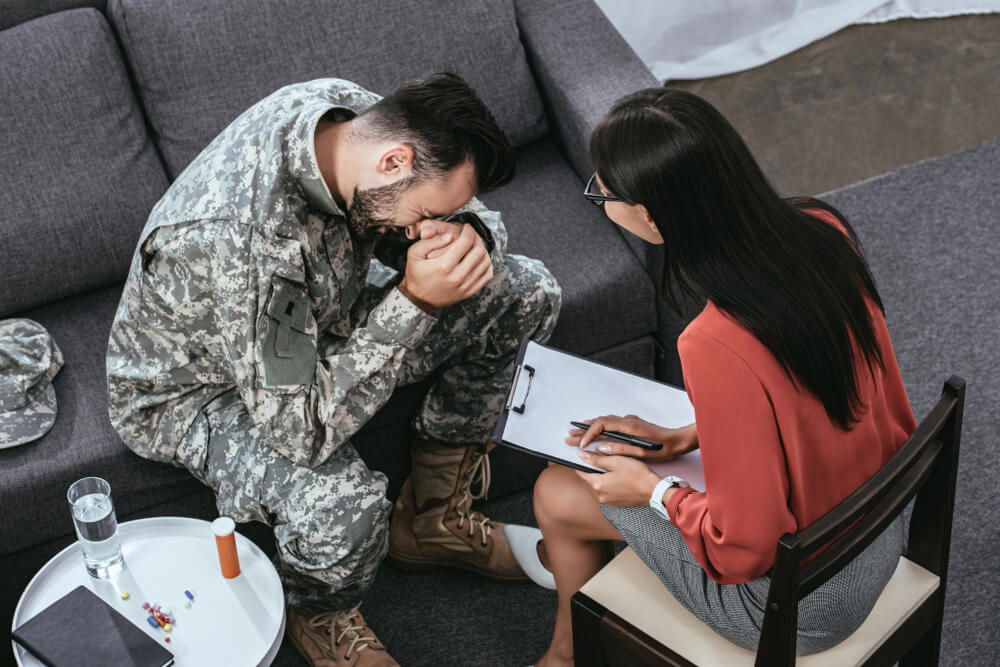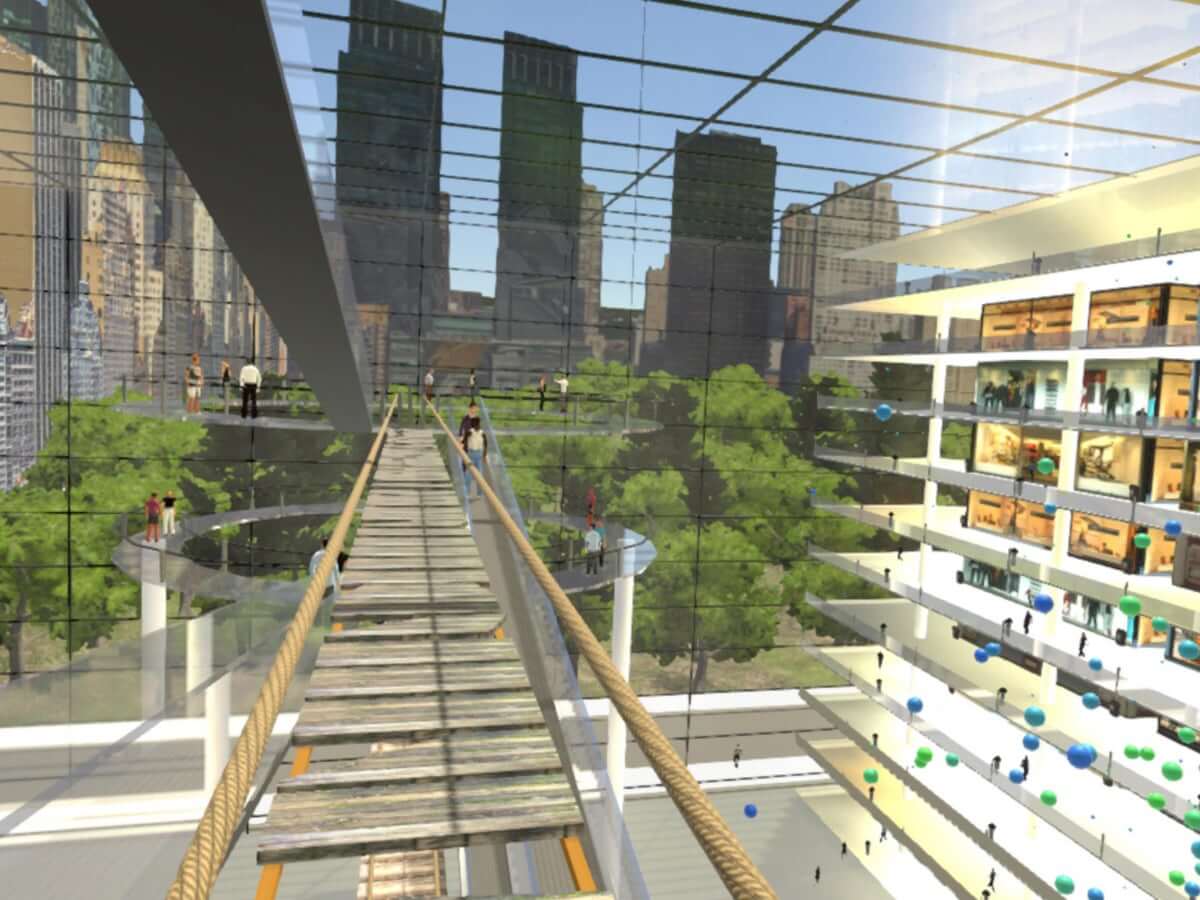Virtual reality presupposes the creation of a fully simulated environment with the help of VR glasses, such as HTC Vive or Oculus Rift. This environment can be 100% artificially modeled or recreated from photos or videos. Putting on VR glasses, a user experiences full immersion and emotional detachment from reality and finds himself/herself in a totally different dimension because of the 360-degree view.
Why is there so much talk about VR in Psychotherapy?
For the human brain, it is impossible to differentiate between the virtual and real environment, and that explains the psychological effect of Virtual Reality on human beings. VR has proved its effectiveness in the treatment of phobias, depression, anxiety, PTSD, burnout, pain alleviation, etc. Why not use this technology for mental health benefits? Several most popular use cases of VR for psychotherapy will be described in this article:
- Virtual Reality for Burnout Treatment
- Virtual Reality for PTSD Treatment
- Virtual Reality for Phobias Treatment
- Virtual Reality for Stress Reduction
Virtual Reality for Burnout Treatment
Physical and emotional burnout has become a real problem in modern society. It creates a significant negative impact on both the quality of life and the quality of life of billions of people, an evident economic burden for the healthcare system as well. Burnout is caused by the fast pace of everyday human life, hyperconnection, and alienation from nature.
VR can offer the alternative to the traditional burnout treatment. According to Svetlana Dragaeva, CEO of Fountain Digital Labs, one of the Softengi clients, a daily 5-minute break in VR in the African savannah with its inhabitants – lions, rhinos, giraffes, and elephants – helps to reduce burnout, improves mood and vitality in a positive way. And this statement has empirical evidence:
The company conducted research at one of the biggest Russian banks, Sberbank, and the Malakhovka Geriatric Center on long-term care for the elderly. More than 350 bank employees participated in the first study. After a short interactive experience with wild animals, ¾ of the participants experienced improved mood and decreased depression according to Beck’s scale.
Two weeks later, these indicators of happiness remained high. More than that, a third of elderly patients felt an immediate reduction in pain. It turned out that such treatment has a cumulative effect – after two weeks of regular sessions, the difference before and after increased. The nannies and nurses contemplating waterfalls in VR had lower blood pressure, improved their physical condition, and the level of emotional exhaustion, as tests showed, decreased from critical to normal.
Virtual Reality (VR) for PTSD
Exposure therapy is commonly used to treat post-traumatic stress disorder (PTSD). In traditional exposure therapy, the patient recalls or imagines traumatic events that he/she experienced and tells the doctor what is happening when he/she faces a stressful situation in the memories again. This helps patients to adapt to stressful memories gradually and reduce the level of emotional response to the events.

Virtual reality works similarly. Only from the patient’s imagination is the action transferred to the screen of a VR headset. In the virtual environment, the traumatic event is recreated for the patient. For example, for war veterans, it will be the battlefield with helicopters, machine guns, and rockets. Faced with traumatic events in a safe environment, a person gradually learns to control his/her fears. More than that, the patient feels the constant support of the therapist and learns to adapt to the triggering situation in a safe manner.
VR for Phobias Treatment
VR can also be applied for the treatment of phobias. Duke Research University even has a special VR therapy program. The treatment method is suitable for people who are afraid of heights, elevators, thunderstorms, public speaking, and flying. Again, the treatment is based on the exposure therapy method, which presupposes that a patient will face his/her phobias in a virtual environment and adapt to them gradually.
Here’s what the treatment regimen looks like:
- After the primary diagnostic conversation, the patient is placed in a three-dimensional virtual world created by a computer. Computer graphics and technology make it possible to achieve a sense of presence and immersion in a virtual environment. The therapist’s voice guides the participant through the environment and interacts with them throughout the session. For a person who is afraid of heights, it can be the roof of a skyscraper. For the client who is afraid of public speaking – a room full of people;
- Studies show that 6 to 12 sessions are required to achieve maximum benefit. Why is VR therapy better than traditional exposure therapy (ET) used to treat anxiety disorders, panic attacks, and phobias?

The benefits of Phobias Treatment with VR are obvious. Exposure Therapy in virtual reality includes exposure (impact) on the patient in a virtual environment where there is a fear-inducing stimulus. Importantly, the patient is not placed in the real world, which can be unpredictable. The therapist controls the virtual environment using the keyboard, ensuring that only programmed situations are affected.
VR for Stress Reduction
About 80% of diseases occur due to the fact that the body can not cope with stress. And modern people have plenty of reasons to be nervous: conflicts, economic instability, risks in businesses, the pandemic.
VR for stress reduction is another popular alternative to traditional methods of fighting stress. For instance, a VR application that transfers a person to a pleasant environment where he/she has to literally scream to destroy the darkness proved to be very effective.

At launch, Mawi employees tested the product. “During the tests, a group of approximately 50 people measured stress levels before and after a session. As a result, the hypothesis was confirmed: shouting is effective for emotional release. “A 3-minute session can reduce stress levels by at least 10%,” says the inventor of a VR app for stress reduction.
Conclusion
The times when virtual reality was perceived only as entertainment are long gone. Today, devices are reaching a new level, the quality of graphics is improving exponentially, and the technology is gaining more and more autonomy, which means that you can feel maximum immersion in a different reality. This makes VR a full-fledged tool for a wide range of projects of various formats, including educational and therapeutic ones.





